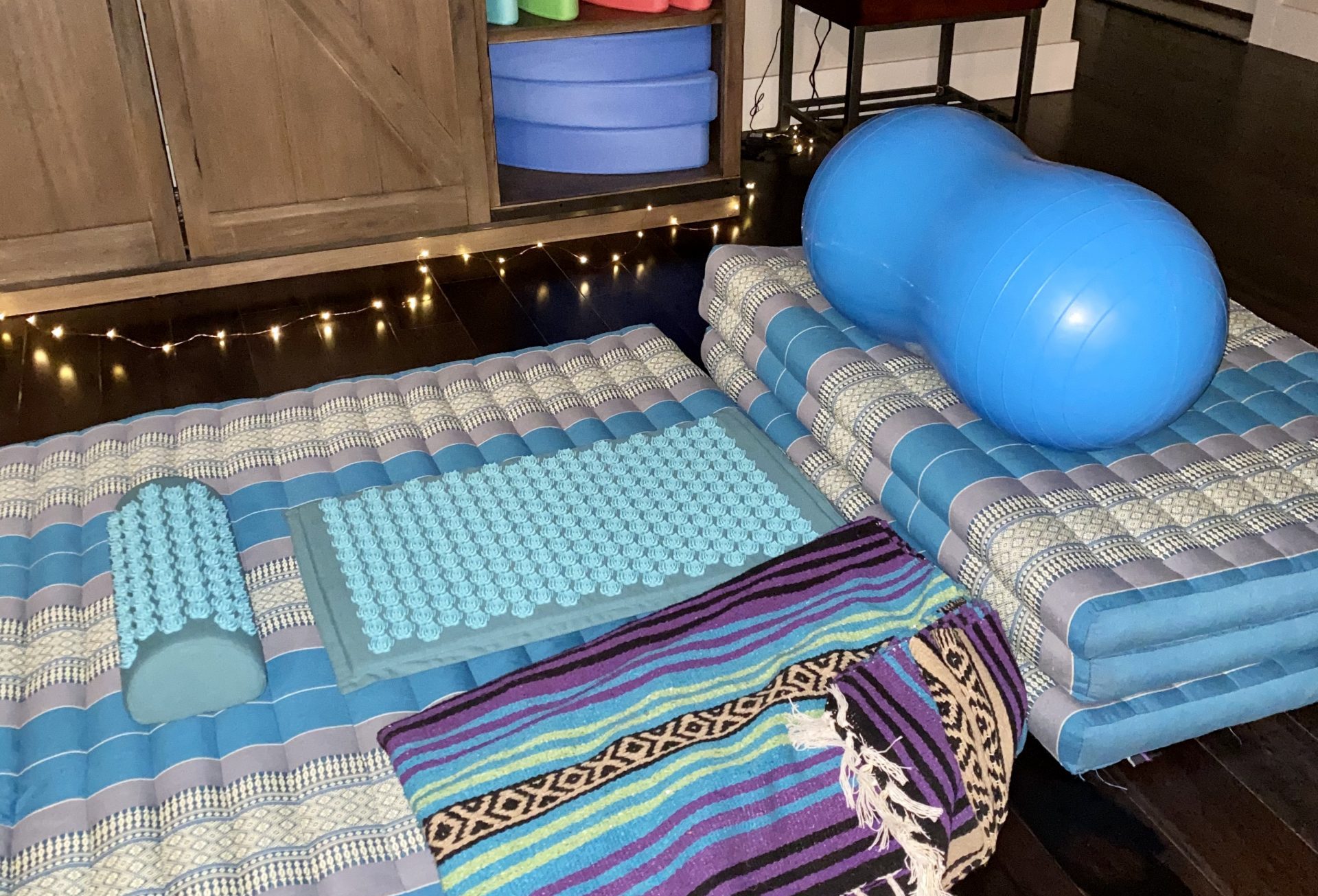Therapeutic modalities
My therapeutic approach honors the body through the artful integration of somatic practices.
When we feel overwhelmed by trauma, talk alone isn’t going to do very much. We have to go to the unspoken voice of our bodies–one that doesn’t use words–to create experiences that contradict those of fear and helplessness.

Somatic Experiencing®
Somatic Experiencing® (SE™) is a body-based, clinically validated approach to healing trauma. It is the product of Dr. Peter Levine’s lifelong multidisciplinary study of stress physiology, psychology, ethology, biology, neuroscience, indigenous healing practices, and medical biophysics. The SE™ approach releases traumatic shock stored in the body and is an important key to healing PTSD and the wounds of emotional and early developmental attachment trauma.
Application of SE™ can lead to successful outcomes for clients with developmental traumas (such as childhood abuse or neglect, ongoing medical issues, or physical impairments) and with shock traumas stemming from events such as motor vehicle accidents, surgeries, assault, natural disasters, and falls.
Clients aren’t required to retell or relive traumatic events; this could be retraumatizing and is one of the shortcomings of traditional talk therapy. Rather, we work in a slow and supportive way to engage, complete, and resolve the body’s instinctual fight, flight, and freeze responses–that is, what didn’t get to happen during the traumatic event(s). This allows the stored energy from the trauma to move through the body, resetting the nervous system and enhancing resilience to stress. Many clients experience improved vitality and capacity to engage in life. In our sessions, we’ll pay attention to sensations in the body and integrate movement and mindfulness.
I completed the 3-year training and earned my Somatic Experiencing Practitioner certification through the Somatic Experiencing Trauma Institute.
Integral Somatic Psychology
Integral Somatic Psychology™ (ISP™) is an approach developed by Raja Selvam, PhD, to improve therapeutic outcomes through greater embodiment of all aspects of experience and all levels of the psyche. It is a comprehensive approach to embodiment based on Western as well as Eastern psychology. Through ISP™ we can facilitate greater embodiment of all basic psychological experiences: awareness, perception, cognition, meaning, evaluation, imagination, memory, emotion, language, intent, and verbal and non-verbal behavior.
Sensory Integration
Sensory integration is the ability to take in information through the senses of touch, movement, smell, taste, vision, and hearing and combine them with prior memories and knowledge already stored in the brain. Dysfunction occurs when a disorder, injury, or trauma causes the brain to take in the senses normally but they are perceived or processed abnormally.
The following are some signs of sensory integration dysfunction:
- Overly sensitive to touch, movements, sights, or sounds. Behavior issues: distractible, withdrawal when touched, avoidance of textures, certain clothes, and foods. Fearful reactions to ordinary movement activities such as playground play. Sensitive to loud noises. May act out aggressively with unexpected sensory input.
- Under-reactive to sensory stimulation. Seeks out intense sensory experiences such as body whirling, falling and crashing into objects. May appear oblivious to pain or to body position. May fluctuate between under and over-responsiveness.
- Unusually high/low activity level. Constantly on the move or may be slow to get going, and fatigue easily. Tendency to be easily distracted or difficulty in making transitions from one situation to another.
- Coordination problems. May have poor balance, may have great difficulty learning a new task that requires motor coordination, appears awkward, stiff, careless, or clumsy.
Sensory re-training utilizes special exercises (a sensory routine) to help a person’s under- or over-sensitivity to the sense of touch, movement, sight, or sound and to help a person’s sense of balance (vestibular) and where their body is in space (proprioceptive).
Embodied Attachment
It’s inevitable. Our bodies and brains store memories of early experiences, creating patterns that influence our behaviors and relationships in life. We may not have been met authentically and in a healthy way by caregivers when we were young, but neuroscience has proven that we are hardwired for healing and making connection with others.
I have been a student of Diane Poole Heller, PhD, SEP, and Patti Elledge, MS, SEP, in a somatically based certification program, Dynamic Attachment Re-patterning Experience (DARe). Working with the body to identify old attachment wounds and integrate a felt sense of attunement in relationship with others can lead to better self-regulation and decreased symptoms of trauma.
Embodied attachment work can be particularly beneficial for clients with early childhood trauma by facilitating a connection with their intrinsic ability to heal, uncoupling attachment patterns from past traumatic threat responses, and finding expansive, secure attachment in relationships.
Polyvagal Theory
Stephen Porges, PhD, is a researcher in the fields of psychology, neuroscience, and evolutionary biology. Through the development of his Polyvagal Theory, Porges created a framework for understanding and working with the emotional and physiological symptoms that come with trauma.
Porges identified what he called “the social engagement system”, a playful mixture of activation and calm that is functional when we feel safe. The social engagement system helps us navigate relationships and the activities of our daily lives. After trauma, we might experience emotional overwhelm, anxiety, dissociation, and have difficulties with social interactions and learning.
Polygaval Theory gives us a lens for expanding the capacity of the social engagement system and lessening the negative effects of trauma. One of the interventions available for this work is Porges’s Safe & Sound Protocol, offered in our Nervous System Spa™.
Embodied Recovery for Eating Disorders
fAs someone who struggled with disordered eating, I’m acutely aware that traditional recovery approaches can be unhelpful at best and retraumatizing at worst. So often treatment either arises from or gives rise to fear. When therapy is boiled down to increasing or decreasing caloric intake, or offering superficial mindfulness techniques, it falls short of recognizing that there is so much more going on beneath the surface.
I’m a graduate of the Embodied Recovery Institute and have studied directly with Paula Scatoloni, LCSW, CEDS, SEP, and Rachel Lewis-Marlow, MS, EdS, LPC, LMBT. The Embodied Recovery approach includes all the layers of a person–as an experience of embodiment rather than just the absence or reduction of eating disorder symptoms.
Eating disorders don’t exist in a vacuum, so it’s necessary to explore trauma histories, attachment styles, defensive strategies, and nervous system regulation. We will work towards supporting the body as a resource through establishing a felt sense of safety. Then we can welcome curiosity and somatic exploration as we work with the body, rather than fighting against it and treating it as an obstacle.
Therapeutic Movement & Trauma Sensitive Yoga
We moved intuitively at the beginning of life, as cells. But somewhere along the way–whether through trauma, injury, or other events–we may have lost the ability to fully inhabit our bodies and to move and nurture them in a way that truly resonates. In a world saturated with information and expectations, sometimes we retreat to our minds, and our bodies become just a vehicle to carry our heads around.
Living a life of ease and vitality requires integrating the mind and body. Both are necessary for a full and healthy experience. My own healing journey showed me the importance of moving back into my body and befriending it.
I completed yoga teacher training at the Asheville Yoga Center and have taken over 500 hours of advanced training in yoga therapy, which I offer through a trauma-integrative lens. I am also a student of Bonnie Bainbridge Cohen, founder of Body-Mind Centering, an integrated and embodied approach to movement, the body, and consciousness.
Inviting our bodies to participate in the therapeutic process can move us into greater connection with ourselves and expand the capacity of our nervous system. This may involve small or large movements as we explore an emotion or experience, or a supportive yoga posture that facilitates discovery or offers nurturing. I also offer customized instruction for movement practices you can do at home to aid your healing.


I offer individualized home programs to enhance your progress
